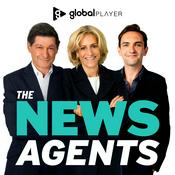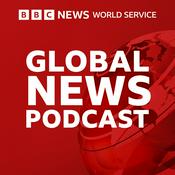232 episodes

IonQ Ignites Quantum Leap: 100-Qubit Tempo Supercharges Korea's HANKANG
24/12/2025 | 3 mins.
This is your Quantum Research Now podcast.IonQ just crashed my morning coffee.Their press release with South Korea’s KISTI landed like a qubit dropped in liquid nitrogen: sharp, shocking, and world-changingly cold. IonQ is shipping a 100‑qubit Tempo system straight into KISTI’s HANKANG supercomputer in Daejeon, turning a classical giant into a hybrid quantum‑classical beast.I’m Leo – Learning Enhanced Operator – and you’re listening to Quantum Research Now.Picture HANKANG as the world’s busiest airport at Christmas, every gate jammed, every runway congested. Classical processors are the air-traffic controllers juggling thousands of flights with brilliant but ultimately limited reflexes. IonQ’s trapped‑ion machine is like dropping in a squadron of teleporting aircraft: they don’t need runways, and they can be entangled so tightly that one “plane” knows what the others are doing instantly.Inside that Tempo system, ytterbium ions hover in an ultra‑high-vacuum chamber, pinned in electric fields, shimmering under lasers. Each ion is a qubit, holding 0 and 1 at the same time, like a coin spinning so fast you only see a blur. When researchers at KISTI fire precisely timed laser pulses, they choreograph those ions into interference patterns that explore an astronomical number of possibilities in one computational “breath.”Here’s why everyone’s buzzing. IonQ recently hit 99.99% two‑qubit gate fidelity – four nines. In plain language, that’s like running ten thousand carefully balanced domino tricks and only knocking one slightly off. With error rates that low, you can start stacking logical qubits out of physical ones without drowning in mistakes. That is the narrow bridge between today’s noisy prototypes and tomorrow’s fault‑tolerant machines.Now weld that bridge directly into a national supercomputer.For Korean scientists modeling new batteries, it’s like upgrading from sketching on napkins to sculpting in 4K holograms. A classical algorithm might test one chemical configuration after another, patiently, linearly. A hybrid quantum‑classical workflow can send the “hard part” of the problem into the ion trap, where superposition and entanglement let you sift through vast design spaces the way a magnet pulls needles from a haystack.Finance, logistics, drug discovery – all those sectors feel this move. The Quantum Insider has been talking about “holiday quantum advantage,” using early hybrid tools to untangle Christmas‑season supply chains. Plugging a system like Tempo into HANKANG means those ideas stop being festive thought experiments and start looking like next year’s procurement plan.And the drama isn’t just in Korea. Around the world this year, we’ve watched record‑accuracy chips, kilometer‑scale neutral‑atom arrays, and even topological qubits redefine what “impossible” means. IonQ’s announcement fits into that pattern: quantum no longer as laboratory curiosity, but as infrastructure.Thanks for listening. If you ever have any questions or have topics you want discussed on air, just send an email to [email protected]. Don’t forget to subscribe to Quantum Research Now, and remember, this has been a Quiet Please Production. For more information, check out quiet please dot AI.For more http://www.quietplease.aiGet the best deals https://amzn.to/3ODvOtaThis content was created in partnership and with the help of Artificial Intelligence AI

Quantum Computing Leaves Lab, Enters Market: D-Wave's CES 2026 Debut Signals New Era
22/12/2025 | 3 mins.
This is your Quantum Research Now podcast.# Quantum Research Now Podcast ScriptGood evening, this is Leo, your Learning Enhanced Operator, and welcome back to Quantum Research Now. Hold onto your seats, because today we're witnessing something remarkable unfold in real-time.Just this morning, D-Wave Quantum announced they're bringing their commercial quantum computing systems to CES 2026, and I need to explain why this matters beyond the tech headlines. D-Wave isn't just showing up to a trade show—they're declaring that quantum computing has officially left the laboratory and entered the marketplace. Think of it like the moment electric vehicles stopped being a curiosity and became something Tesla could mass-produce. That's where we are right now.Here's what makes this significant. D-Wave specializes in something called annealing quantum computers, which work fundamentally differently from the gate-model systems you hear about from Google and IBM. Imagine you're trying to find your way out of a massive maze in pitch darkness. A classical computer would methodically try every single path. A quantum annealer, meanwhile, shakes the entire maze at once, allowing solutions to naturally settle into low-energy states. D-Wave's systems can solve optimization problems in manufacturing, supply chain logistics, and materials science—problems that have plagued industries for decades.The company's vice president of quantum technology evangelism, Murray Thom, will be presenting a masterclass at CES on January seventh, demonstrating how these machines deliver measurable benefits today, not in some distant future. This is crucial. We're not talking about theoretical advantages anymore. D-Wave has over one hundred organizations currently using their systems, with more than two hundred million problems submitted to their quantum computers to date. Real customers. Real problems. Real solutions.But here's where it gets even more interesting. Simultaneously, we're seeing a wave of breakthroughs that suggest 2026 might be the year quantum computing becomes genuinely industrialized. Silicon Quantum Computing has achieved fidelity rates reaching 99.99 percent—error correction at levels that rival fault-tolerant thresholds. Atom Computing is demonstrating qubit recycling techniques that keep quantum processors running longer without losing quantum information. These aren't incremental improvements; they're architectural revolutions.What does this mean for computing's future? Imagine a pharmaceutical company discovering new drug compounds in weeks instead of years, or energy companies optimizing power grids in real-time, or financial institutions solving portfolio optimization problems that classical computers can barely touch. That's not hyperbole—that's the practical reality companies are already experiencing.The quantum age isn't approaching anymore. We're living in it.Thank you for joining me on Quantum Research Now. If you have questions or topics you'd like us to explore, email me directly at [email protected]. Please subscribe to Quantum Research Now, and remember, this has been a Quiet Please Production. For more information, visit quietplease.ai.For more http://www.quietplease.aiGet the best deals https://amzn.to/3ODvOtaThis content was created in partnership and with the help of Artificial Intelligence AI

Silicon Quantum Computing Shatters Records with 14/15 Architecture Chip, Unveiling Quantum's Sleek Future
21/12/2025 | 3 mins.
This is your Quantum Research Now podcast.Imagine this: a single phosphorus atom, precisely placed in silicon like a lone chess piece on an infinite board, holding the power to redefine computation. That's the thrill humming through the labs right now, as Silicon Quantum Computing—SQC—just shattered records with their new 14/15 architecture chip, boasting 99.99% fidelity on nine nuclear qubits and two atomic ones. Live Science reports this as the world's most accurate quantum processor yet, unveiled in a Nature paper from December 17th. I'm Leo, your Learning Enhanced Operator, and on Quantum Research Now, I'm diving into why this makes headlines today, December 21st, 2025.Picture me in the crisp, humming cleanroom at SQC's Sydney facility—sterile air thick with the faint ozone whiff of cooling systems, laser light pulsing like distant lightning as we implant phosphorus donors into ultra-pure silicon wafers. The 14/15 setup—silicon atom 14, phosphorus 15—creates qubits at atomic scale, 0.13 nanometers apart, dwarfing even TSMC's finest features. CEO Michelle Simmons calls it "two orders of magnitude below standard," enabling long coherence times where nuclear spins barely flip bits, slashing error correction overhead.Why does this matter? Quantum computers aren't just faster classical ones; they're probability engines, exploring countless paths simultaneously via superposition—like a gambler betting every horse at once, collapsing to the winner only when measured. SQC's breakthrough means fault-tolerant scaling without qubit bloat. Traditional setups, like IBM's or Google's, burn thousands of qubits just for error fixes as systems grow. Here, precision qubits self-stabilize, needing fewer guardians. It's like upgrading from a leaky rowboat to a sleek submarine: dive deeper into complex simulations—drug molecules folding like origami in a storm, or fusion plasmas dancing in magnetic cages—without drowning in noise.This echoes Universal Quantum's fresh partnership with Atlas Copco from December 20th's updates, forging utility-scale machines, and IonQ's distributed linking study proving networked qubits outpace monoliths. Quantum's no longer sci-fi; it's superpositioned between lab and launchpad, mirroring today's chaotic markets where one precise move topples giants.We've leaped toward practical quantum supremacy, where computations once demanding supercomputers yield in echoes. The future? Millions of qubits in compact, low-power chips revolutionizing AI, climate modeling, and unbreakable encryption.Thanks for tuning in, listeners. Got questions or topic ideas? Email [email protected]. Subscribe to Quantum Research Now, and this has been a Quiet Please Production—for more, check quietplease.ai. Stay quantum-curious. (Word count: 428)For more http://www.quietplease.aiGet the best deals https://amzn.to/3ODvOtaThis content was created in partnership and with the help of Artificial Intelligence AI

Quantum Fluid Dynamics: Taming Turbulence with Qubits | QubitSolve Scores NSF Grant
19/12/2025 | 2 mins.
This is your Quantum Research Now podcast.Imagine this: a whisper from Morgantown, West Virginia, ripples through the quantum world, promising to tame the wildest turbulence in our skies. I'm Leo, your Learning Enhanced Operator, diving deep into the heart of quantum breakthroughs on Quantum Research Now.Just today, QubitSolve Inc. grabbed headlines with a $1.2 million NSF grant for their quantum computational fluid dynamics software. Picture it—engineers wrestling the Navier-Stokes equations, those devilish math beasts that govern how air slices over a jet wing or plasma churns in fusion reactors. Classical supercomputers choke on them, like trying to predict every raindrop in a hurricane with a pocket calculator. But QubitSolve's variational quantum algorithms? They superposition countless possibilities, collapsing the chaos into precise simulations impossible today. It's like giving engineers x-ray vision for fluid flows, slashing aerospace design cycles from years to months, first targeting North American defense apps with a MVP by late 2027.Feel the chill in my Morgantown-inspired lab: dilution fridges humming at 10 millikelvin, superconducting coils pulsing with cryogenic mist, qubits dancing in superposition like fireflies in a digital storm. I once watched a variational algorithm iterate live—qubits entangling, optimizing parameters in a quantum ballet that outpaced classical solvers by orders of magnitude. The air crackles with helium's faint scent, screens flickering with wavefunctions that bend reality.This isn't isolated. Google's Willow chip just demoed verifiable quantum advantage via their Quantum Echoes algorithm, solving molecular riddles 13,000 times faster than supercomputers—echoing Clarke, Devoret, and Martinis' Nobel-winning qubit foundations. IonQ's expanding in Europe with QuantumBasel, weaving hybrid quantum-classical webs. And tantalum qubits from Princeton? Coherence stretched to 1.68 milliseconds—15 times Google's best—like extending a soap bubble's iridescent life from seconds to symphonies.Quantum's mirroring our turbulent world: fluid dynamics breakthroughs amid geopolitical storms, where faster sims mean agile drones outmaneuvering threats. We're not just computing; we're reshaping reality's flow.Thanks for joining me, listeners. Questions or topic ideas? Email [email protected]. Subscribe to Quantum Research Now, and remember, this is a Quiet Please Production—for more, visit quietplease.ai. Stay quantum-curious.For more http://www.quietplease.aiGet the best deals https://amzn.to/3ODvOtaThis content was created in partnership and with the help of Artificial Intelligence AI

Quantum's Transistor Moment: Photonic Chips Pave Scalable Future
17/12/2025 | 3 mins.
This is your Quantum Research Now podcast.I’m Leo, your Learning Enhanced Operator, and today the quantum world feels especially alive.This morning, Quantum Computing Inc. out of Hoboken hit the wires, confirming physicist and photonics pioneer Dr. Yuping Huang as its new CEO. According to the company’s announcement, he is doubling down on something that sounds small but is seismic: room‑temperature, integrated photonic quantum machines built on thin‑film lithium niobate. In plain language, they’re trying to shrink an entire optics lab onto chips you can stack like Lego bricks.Picture the old way of quantum computing as an orchestra spread across a football field: cryogenic fridges humming, lasers on wobbly tables, cables everywhere. QCi’s photonic approach is more like cramming that orchestra into a pair of noise‑cancelling earbuds. Same music, radically different form factor.Here’s why that matters. Classical computing scaled when transistors became tiny, cheap, and manufacturable. Quantum needs its own “transistor moment.” QCi’s plan to expand their Fab 1 and build Fab 2 is essentially them saying: we don’t just want a beautiful prototype violin, we want a factory that stamps out Stradivarius‑grade instruments by the million. If they succeed, quantum won’t live only in national labs; it slips into data centers, telecom racks, maybe even edge devices.Now fold in another development from this week: researchers at IonQ and Aalto University showed that linking multiple smaller quantum processors can beat one big monolithic machine, even when the connections between them are relatively slow. Think of a convoy of electric cars that can coordinate so well they outperform one giant bus stuck in traffic. That’s distributed quantum computing in action.Inside the lab, this looks almost theatrical. Separate quantum processing units, each bathed in their own carefully tuned fields or laser colors, prepare fragments of a larger algorithm. Those fragments are purified, checked, and only then stitched together using entanglement, like sewing quantum silk with threads you can’t see but absolutely can’t afford to break.Now imagine QCi’s vision intersecting with that IonQ roadmap. Photonic chips fabricated at scale, snapping into modular quantum networks the way today’s cloud providers spin up clusters. Finance uses them to price risk like weather, defense uses them to read patterns buried in noise, climate scientists run simulations that feel less like models and more like previews.That’s the future today’s announcement points toward: quantum not as a fragile curiosity, but as infrastructure.Thanks for listening. If you ever have questions, or topics you want covered on air, send me an email at [email protected]. Don’t forget to subscribe to Quantum Research Now. This has been a Quiet Please Production, and for more information you can check out quiet please dot AI.For more http://www.quietplease.aiGet the best deals https://amzn.to/3ODvOtaThis content was created in partnership and with the help of Artificial Intelligence AI
More News podcasts
Trending News podcasts
About Quantum Research Now
Listen to Quantum Research Now, The Rest Is Politics: US and many other podcasts from around the world with the radio.net app

Get the free radio.net app
- Stations and podcasts to bookmark
- Stream via Wi-Fi or Bluetooth
- Supports Carplay & Android Auto
- Many other app features
Get the free radio.net app
- Stations and podcasts to bookmark
- Stream via Wi-Fi or Bluetooth
- Supports Carplay & Android Auto
- Many other app features


Quantum Research Now
download the app,
start listening.




































